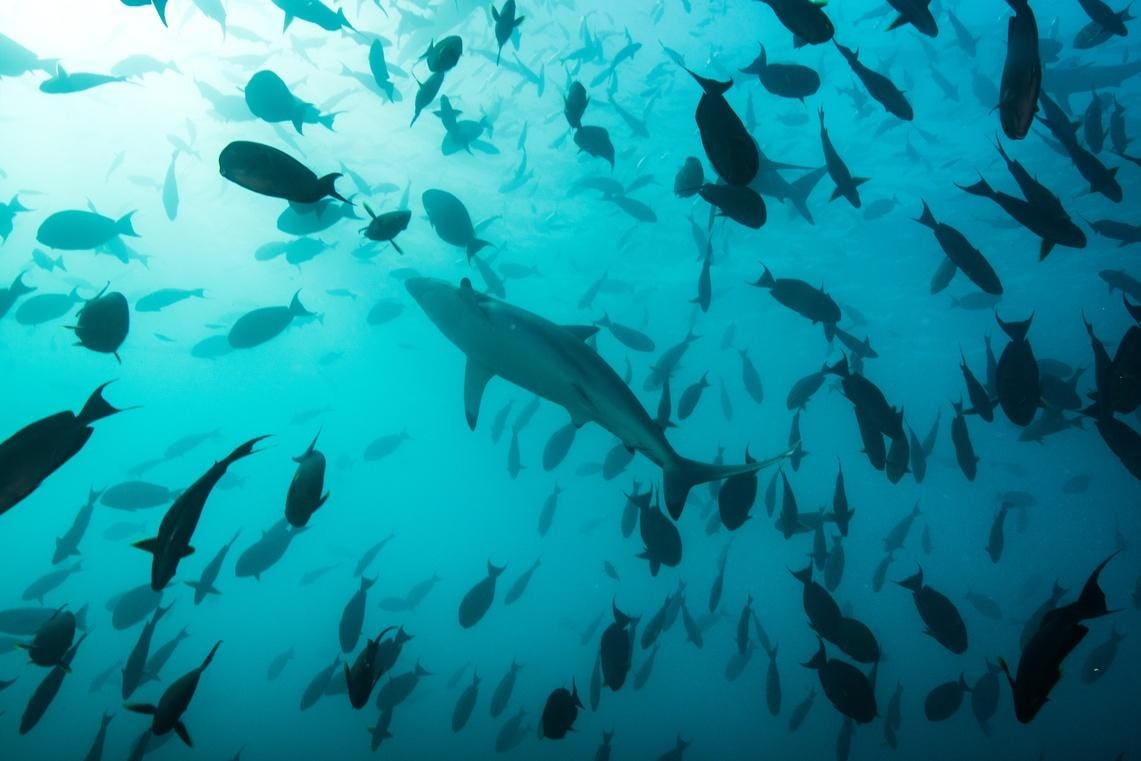A team of global and regional experts recently came together to embark on a massive mission: mapping critical habitats for sharks, rays, and chimaeras across the captivating Mediterranean and Black Seas.
It’s estimated that there are around 78 species of elasmobranchs can be found here, having adapted to thrive in the diverse marine ecosystems of these underwater realms and adding to the richness and biodiversity of the region. During this five-day workshop, organized by the IUCN Species Survival Commission Shark Specialist Group and hosted by iSea, over 180 experts from around the world worked tirelessly both online and in person to delineate what they call Important Shark and Ray Areas (ISRA) in this region. Defined by the IUCN SSC Shark Specialist Group as “discrete, three-dimensional portions of habitat, important for one or more shark species, that are delineated and have the potential to be managed for conservation,” it’s almost like giving them their own VIP section in the ocean. These include places where species of concern mate, reproduce, feed, rest, or aggregate as well as key stopovers during a migration. And while ISRAs themselves may not be ‘officially’ protected areas, they play a pivotal role in shaping policies and management measures.
How the ISRAs are picked takes a Herculean effort and a lot of caffeine, as was discovered recently when experts gathered to delineate ISRAs for parts of the Pacific Ocean. But instead of being in a room in a South American country, picture 26 participants from 16 countries exchanging invaluable information on how these creatures utilize their habitats in Greece. “We are very happy to host the ISRA workshop in Thessaloniki. The Mediterranean Sea is a hotspot of shark and ray extinction risk and the ISRA process will help us identify priorities for conservation and area-based management as well as understand gaps in knowledge. It has been an amazing week, everyone worked very hard, and we cannot wait to see the final results,” said Ioannis Giovos, the Director of iSea. Together, the scientists spent days pouring over the available research and literature for each elasmobranch species, meticulously drawing boundaries around the areas deemed of utmost importance.
“‘I cannot say how excited I am today to work at the identification of areas that are important for sharks and rays in the same region – the Mediterranean Sea – where we started the Important Marine Mammal Area (IMMA) adventure 6 years ago,” said Prof. Giuseppe Notarbartolo di Sciara, co-Chair of the IUCN Marine Mammal Protected Areas Taskforce. “We are already seeing signs of how IMMAs are helping marine mammal conservation here, and there is such an urgent need for this to happen for sharks and rays as well.”
This is the second in a series of 13 regional workshops to be organized around the world; it is expected that a Western Indian Ocean workshop will take place in September 2023. “Experts working on sharks, rays, and chimaeras around the world are requesting the convening of such meetings in their respective region to ensure these species groups are considered as countries begin to implement their commitment under the Kunming-Montreal Global Biodiversity Framework of protecting 30% of our oceans by 2030,” a press release for ISRA explained. Delineated areas will be considered by governments, intergovernmental organizations, conservation groups, and the general public for conservation measures.
The IUCN SSC Shark Specialist Group is a global network of experts dedicated to the conservation and management of sharks, rays, and chimaeras. They work collaboratively to assess the conservation status of these species, provide scientific advice, and promote their protection. The team are pushing boundaries, both literally and figuratively, to protect and preserve these species. By identifying and prioritizing these areas, the Shark Specialist Group aims to enhance conservation efforts and promote sustainable management of elasmobranch populations worldwide: “We have learnt so much on the areas that are critical for the reproduction, feeding, aggregation and other life-history attributes of these species in the Mediterranean and Black Seas. However, this work has also highlighted the challenges in our understanding of important areas that need be considered for the conservation of these species as well as in the development of protected areas. We hope that by bringing together experts from the region, they can continue to work together to further the conservation of these species,” adds Dr. Rima Jabado, ISRA project leader and Chair of the IUCN Species Survival Commission Shark Specialist Group.
After undergoing rigorous peer review, the workshop’s final results are expected to be announced in August 2023.
Read the full article here




